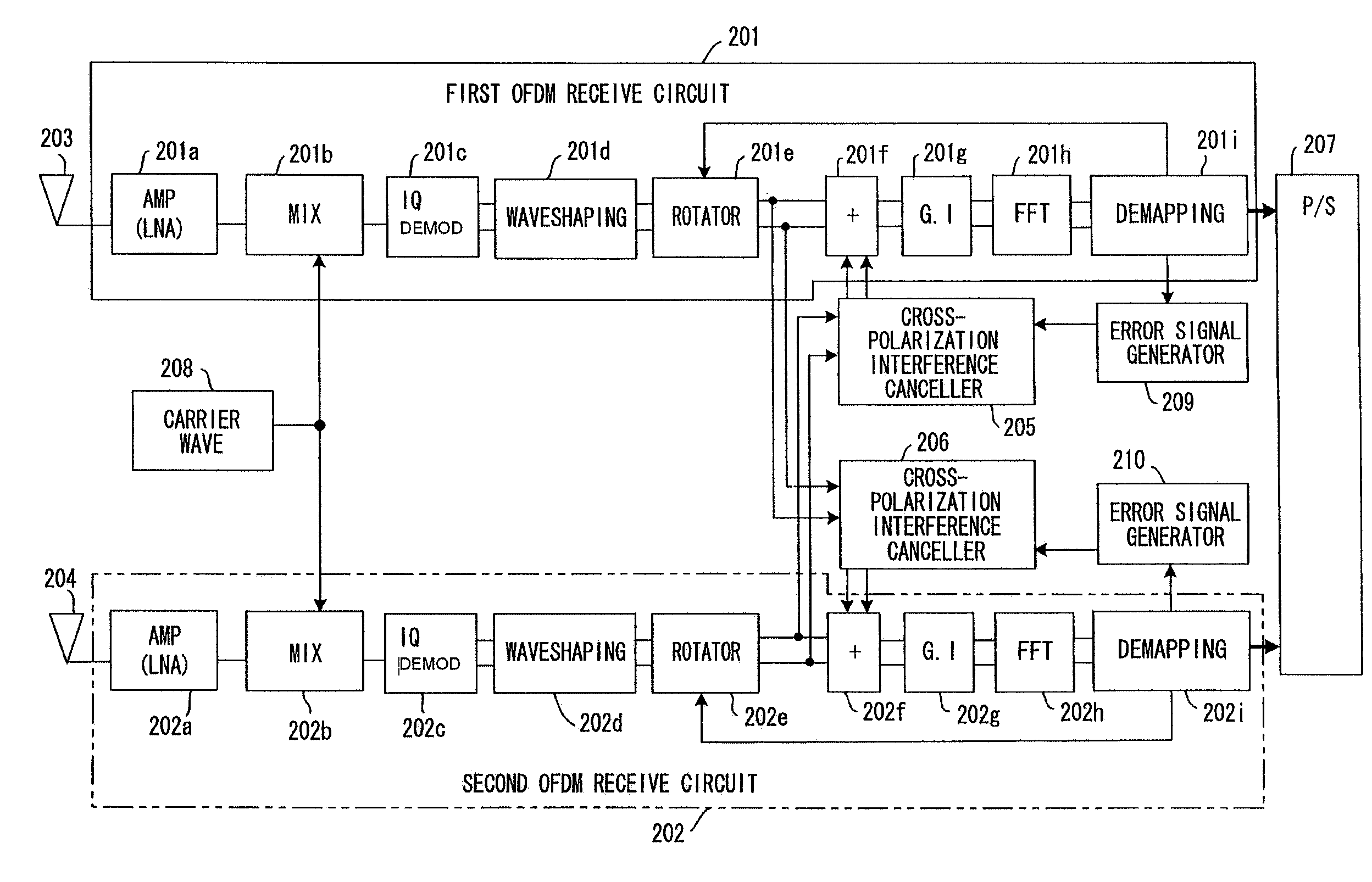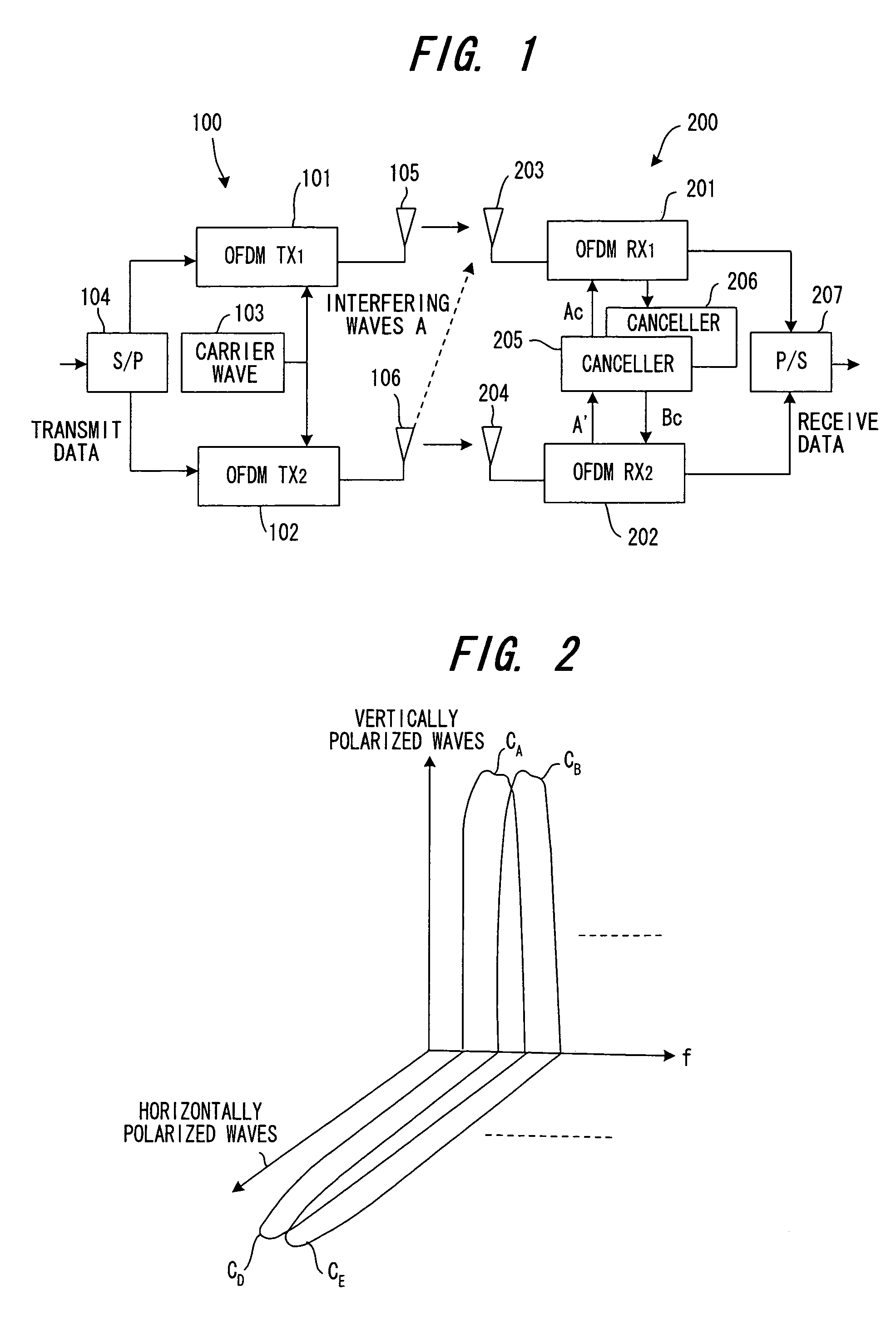OFDM transceiver apparatus
a transceiver and transmitter technology, applied in the field of orthogonal frequency division multiplex (ofdm) transceiver apparatus, can solve the problems of cross-polarization interference, cross-polarization interference, and the inability to readily expand the dedicated bandwidth of frequency, so as to reduce the number of taps, the delay of interference waves becomes relatively small, and the effect of eliminating cross-polarization interferen
- Summary
- Abstract
- Description
- Claims
- Application Information
AI Technical Summary
Benefits of technology
Problems solved by technology
Method used
Image
Examples
Embodiment Construction
[0037](A) Principle of the Present Invention
[0038]FIG. 1 is a diagram showing the principle of the present invention. An OFDM transmitter apparatus 100 includes first and second OFDM transmit circuits (OFDM TX1, OFDM TX2) 101, 102, the OFDM transmit circuits 101, 102 being provided with a shared carrier wave generator 103. A serial / parallel (S / P) converter 104 converts serial data to parallel data, inputs half the parallel data to the OFDM transmit circuit (OFDM TX1) 101 and inputs the other half to the OFDM transmit circuit (OFDM TX2) 102.
[0039]A frequency converter (not shown) in each of the OFDM transmit circuits 101, 102 multiplies the carrier wave that is output from the carrier wave generator 103 by a baseband signal, thereby effecting a conversion to a radio signal. The OFDM transmit circuit 101 transmits the radio signal from an antenna 105 by vertically polarized waves, and the OFDM transmit circuit 102 transmits the radio signal from an antenna 106 by horizontally polarize...
PUM
 Login to View More
Login to View More Abstract
Description
Claims
Application Information
 Login to View More
Login to View More - R&D
- Intellectual Property
- Life Sciences
- Materials
- Tech Scout
- Unparalleled Data Quality
- Higher Quality Content
- 60% Fewer Hallucinations
Browse by: Latest US Patents, China's latest patents, Technical Efficacy Thesaurus, Application Domain, Technology Topic, Popular Technical Reports.
© 2025 PatSnap. All rights reserved.Legal|Privacy policy|Modern Slavery Act Transparency Statement|Sitemap|About US| Contact US: help@patsnap.com



